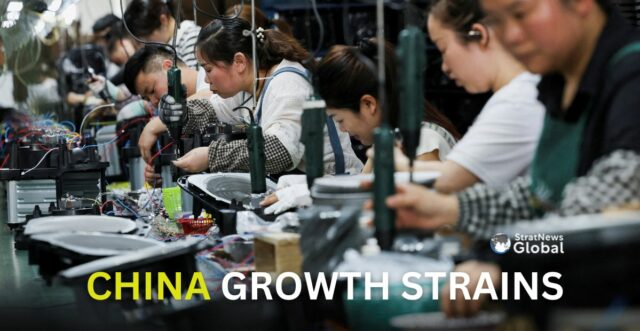China’s factory output and retail sales posted their slowest growth in more than a year in October, increasing pressure on policymakers to reinvigorate the $19 trillion export-driven economy as the trade war with the United States and sluggish domestic demand weigh on growth.
New Policy Direction Needed
Policymakers acknowledge the need for change to address historical supply-demand imbalances, lift household consumption and tackle towering local government debt that keeps provinces — many with economies the size of nations — from being self-reliant.
All the same, they also recognise structural reform will be painful, and is fraught with political risk at a time when Trump’s trade war has ramped up pressure on the economy.
China’s exports unexpectedly crumbled in October, data showed last week, as producers struggle to turn a profit in other markets after months of front-loading to beat Trump’s tariff threats.
Surprisingly, China’s car sales also snapped an eight-month growth streak, despite expectations purchases would accelerate before the phase-out of various tax breaks and government subsidies.
China’s Singles’ Day boosted October retail figures, but muted consumer sentiment showed that even deep discounts are no longer enough to spur strong spending.
Urgent Need For Reform
China’s deepening investment slump is adding to policymakers’ worries as weak confidence weighs on the economy. Fixed-asset investment fell 1.7% in the first 10 months, worse than expected, even as the Communist Party vowed to boost consumption and strengthen industry.
Economists warn Beijing may again lean on state-led projects, with state firms now propping up infrastructure spending.
A protracted slowdown in the nation’s property sector, a key store of household wealth, also showed no sign of abating, with new home prices falling at their fastest monthly pace in a year.
There remains room for stimulus, but officials would rather reserve it for 2026. China only needs 4.5%-4.6% growth for the fourth quarter to meet the 5% growth target, so their willingness to introduce more stimulus is not strong.”
(With inputs from Reuters)





